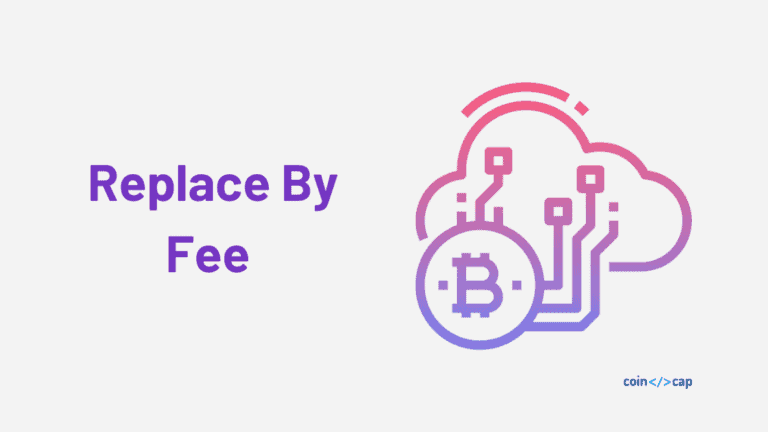On June 14, 2021, the Lightning network reached a milestone of 1,500 Bitcoins, worth more than $60 million. There are already over 12,000 active nodes on the network, with 50,300 channels connecting them all. Moreover, this year has seen a surge in the growth of the Bitcoin Lightning Node, which promises to make Bitcoin a more efficient payment network. In this article, we’re going to get a complete understanding of how to run a Lightning Network Node.
Table of Contents
What is a Node?
Node is a computer that connects to a cryptocurrency network. Every node is connected to the blockchain, and they are continuously updating each other with the most recent information uploaded to the blockchain.
What are Functions?
- Functions provide additional validation for the ledger and allow anybody to observe transactions on the network in real-time.
- They guarantee the data on the blockchain is legitimate, safe, and accessible to authorized parties.
Types of Nodes
- Full Node: These types of nodes have a single copy of the whole blockchain history, including all transactions, timestamps, and blocks produced.
- Light Node: These types of nodes do not download the blockchain entirely. Instead, it merely downloads the block headers to confirm the validity of the transactions.

Bitcoin Lightning Network
History
Joseph Poon and Thaddeus Dryja suggested the lightning network in 2015. The lighting network was intended to address the issue of bitcoin’s slow transaction time and throughput.
Definition
It is a layer of connections on top of the blockchain to significantly enhance its speed. Furthermore, you can learn about the Bitcoin Lightning Network from our article by clicking here.
Advantages
- Lightning Network allows for instant payments without the need for network confirmations.
- It enables transfers as tiny as a fraction of a penny with practically no costs.
- Furthermore, it can also handle millions of transactions per second and surpass existing payment systems without the middleman.
Bitcoin Lightning Network Node
Definition
It acts as our entrance into the Lightning Network ecosystem. To perform anything on the lightning network, we must have our own running node. In addition, it will allow us to make rapid, inexpensive, and private payments on top of a blockchain.
Features
- It monitors the underlying blockchain on which tokens are stored. If the Lightning Network node fails to accomplish this correctly, we risk having our money stolen.
- A Lightning Network node also communicates with other peer-to-peer network nodes which are blockchain’s peer-to-peer network and lightning’s peer-to-peer network.
- Also, it is the job of a Lightning Network node to trade money with other Lightning nodes.
The lightning peer-to-peer network is where money on the Lightning network is exchanged. (just like Bitcoin’s P2P network)
Bitcoin Node V/s Lightning Network Node
Every transaction on the bitcoin network must be verified by a bitcoin node. Likewise, a Lightning Network node must validate transactions with the node with which it is directly communicating.
Setting up a Bitcoin Lightning Network Node
Case 1
If we want to run our node on a computer, we can simply download Bitcoin Core for Windows, Mac, or Linux.
Case 2
If we want to run our node on a separate piece of hardware that we can leave running all day, and also it will not take up a lot of space on our computer; we can use a Raspberry Pi.
Running Node on Raspberry Pi V/s Running Node on Computer
Both are the same. The main difference is that we require special software to adjust for hardware variations. We may either write this software ourselves or utilize one of the pi-focused bitcoin node software clients that provide their own Bitcoin Core implementations.
Examples of Raspberry Pi nodes
- myNode: It promises to make it easier to run a dedicated Bitcoin node and Lightning wallet. Their system combines the greatest open source software with our browser-based interface for accessing all of the apps, allowing us to utilize Bitcoin and Lightning safely and securely.

- RaspiBlitz: It is a Lightning Node based on LND that runs alongside a Bitcoin-Full node on a RaspberryPi 4 which is complete with an SSD and a nice touchscreen for easy setup and monitoring.

- Umbrel: It offers a limited, controlled environment that is much easier to set up for a novice user.

Using Umbrel
In this article, we will be using Umbrel. We will Install Umbrel on a Raspberry Pi 4 as it is the fastest and most reliable way to run Umbrel.
Step 1: Purchasing the Hardware
To purchase individual parts from Amazon, simply click on the links below;
- Raspberry Pi Power Supply
- Raspberry Pi 4
- 1 TB SSD
- SSD Enclosure
- 16GB+ microSD
- Ethernet Cable
- Case
- Card Reader
Step 2: Downloading the Umbrel OS
On our computer, we will be downloading and installing Umbrel OS.
Step 3: Downloading the Balena Etcher
On our computer, we will be downloading and installing Balena Etcher. This is done to flash the Umbrel OS file that we have downloaded in the previous step onto the microSD card.
Step 4: Plugging the microSD card in our computer

Step 5: Flashing the Umbrel OS
Open Balena Etcher and flash the downloaded Umbrel OS zip file on the microSD card.

Step 6: Inserting the microSD card into Raspberry Pi
Remove the microSD card from our computer and place it into the Raspberry Pi after the flash is complete.

Step 7: Connecting the SSD
Insert the SSD into its enclosure and connect it to one of the Raspberry Pi’s two USB 3.0 ports.

Step 8: Connecting to our Router
Connect one end of the ethernet cable to the Raspberry Pi and the other end to any vacant port on your router.

Step 9: Powering Up
Connecting the power supply to the Raspberry Pi to turn it on.

Step 10: Dashboard
After 5 minutes, our Umbrel will be available at Umbrel Local on the device, which is connected to the same network as the Raspberry Pi.

After installation, navigate to Umbrel Local to view your dashboard from the device which is on the same network.
Downloading the Blockchain
Now we must download the blockchain. It takes a few days to download the Bitcoin blockchain. Moreover, the dashboard will allow you to track its development. It should be noted that the proportion downloaded will grow more quickly initially but will gradually decrease as blocks become slower to process. Because they have grown increasingly clogged with more transactions over time, our node will have to validate the authenticity of each transaction.
Running our Node on Lightning Network
- As Umbrel creates a Lighting network in the background, our node will be linked to it.
- To begin transactions through it, we must first establish a Lightning channel.
- Also, to open a channel, go to the Lightning tab and choose open channel.
- We must now locate a Lightning address of a node to which we want to connect.
- You can find Lightning address on Lightning explorer like 1ML.
- Further, we should decide how much bitcoin we want to put into your channel and how much we want to spend.
- Once we have established our channel, we are connected to the network via that channel.
- We can now send our satoshis to anyone else on the network as long as a sufficient route exists between our node and their node.
- Moreover, our channel will be open in approximately 30 minutes, and we will be able to send satoshis to anyone on the Lightning network from our node.
Bitcoin Lightning Node: Conclusion
The Lightning network is ideal for small payments. Moreover, it is still a very new network with growing liquidity. Therefore, transactions over lightning networks are quicker, less expensive, and more easily verified than transactions on the bitcoin blockchain directly. In addition, the lightning network was meant to decongest the bitcoin blockchain. Also, to decrease related transaction costs by moving transactions off-chain and away from the main blockchain.
Also, read


![How Bitcoin Mining Work? [Technical] 24 How Bitcoin Mining](https://coincodecap.com/wp-content/uploads/2020/03/How-Bitcoin-Mining-1-768x432.png)







